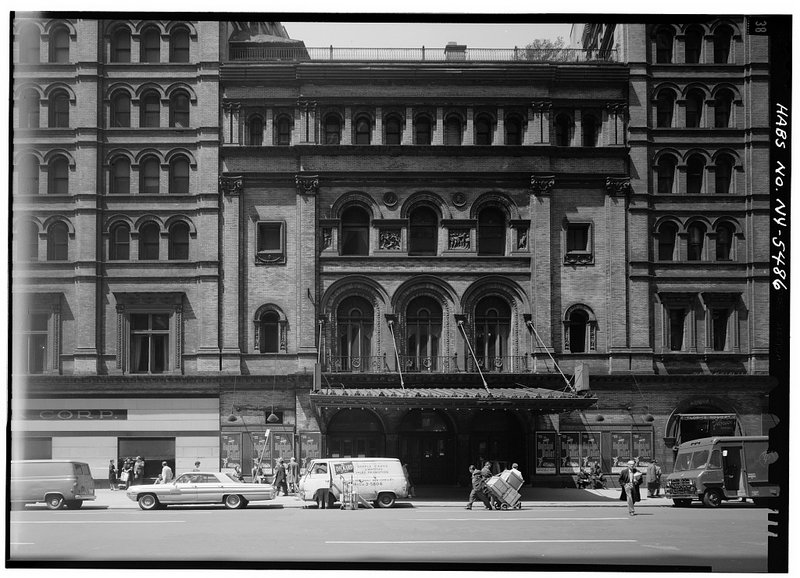5. The Met Opera Supported the Demolition of Its Original Opera House
 Exterior of Original Met Opera house. Photo from Library of Congress.
Exterior of Original Met Opera house. Photo from Library of Congress.
By 1967, 39th Street opera house would be razed to the ground despite a fierce landmarking effort by the community and city leaders including New York City Mayor Lindsay and Governor Nelson Rockefeller, as well as lawmakers in Albany. As the Metropolitan Opera archivists explain, within a quarter of a century, it became clear that the original building was “inadequate for producing a long season of opera on a grand scale. Though the auditorium was elegant and opulent, almost no other feature of the house met the basic needs of the performing company. Even the auditorium offered far too few full view seats, and the backstage spaces were completely insufficient. Between 1908 and 1955, the search for a site to build a new house was nearly constant.”
Archival photographs show rehearsals for the opera taking place on the rooftop stage and in the restaurant of the opera house, because the chorus had no dedicated rehearsal space. Due to lack of storage space, sets would have to be completely taken down and a new one constructed for a new scene during intermissions, with sets temporarily stored on the street on 7th Avenue.
In 1955, the development of a multi-discipline performing arts center at Lincoln Center offered the first viable alternative new location for the Metropolitan Opera. The urban renewal project would demolish the neighborhood of San Juan Hill, where West Side Story was filmed. Ironically, along with the move, The Metropolitan Opera Management sued to have their own opera house razed. The Met Opera needed the income from the lease of a new office building on the site and also feared potential competition might arise if a new opera company took over the existing opera house.





